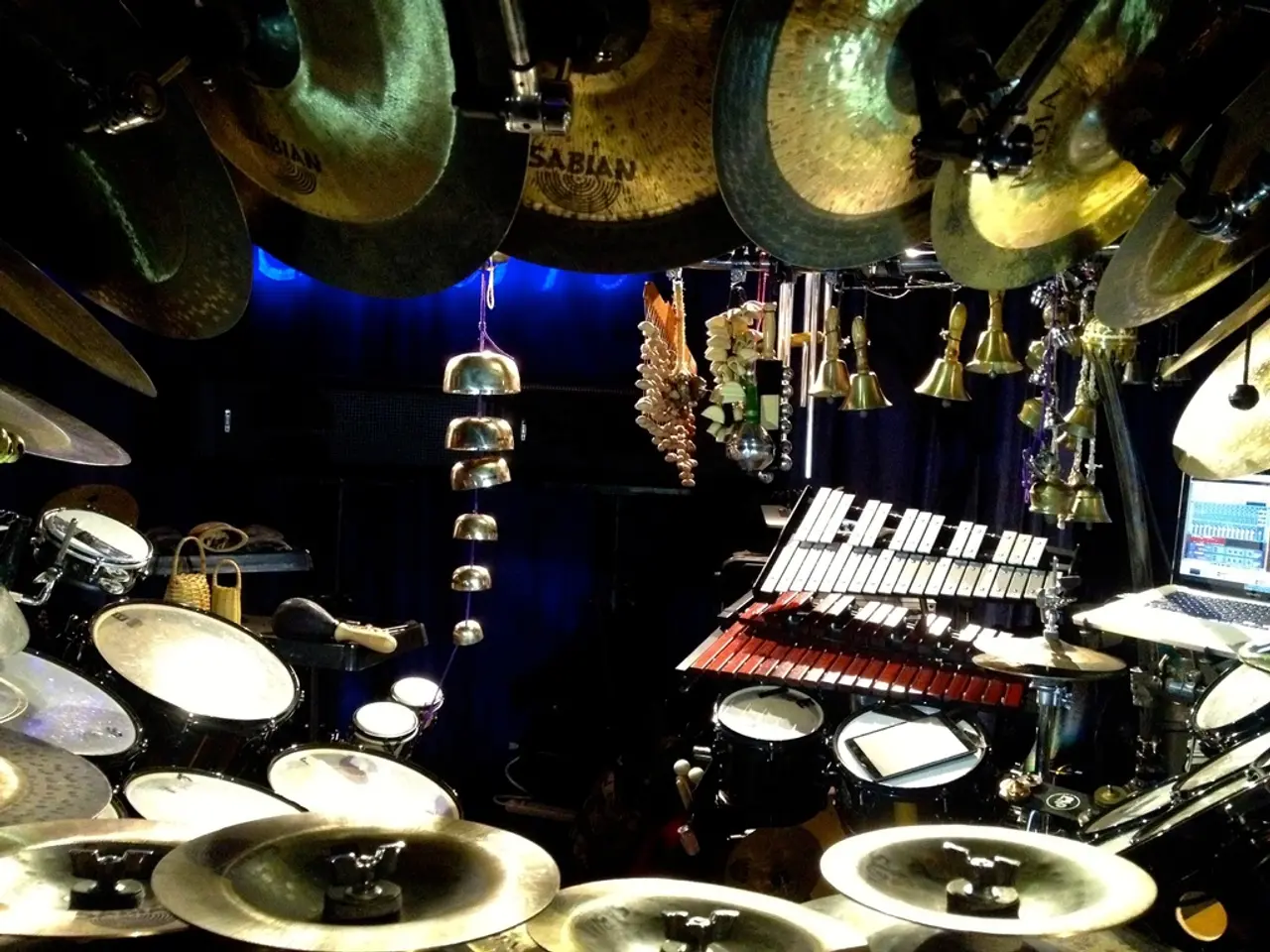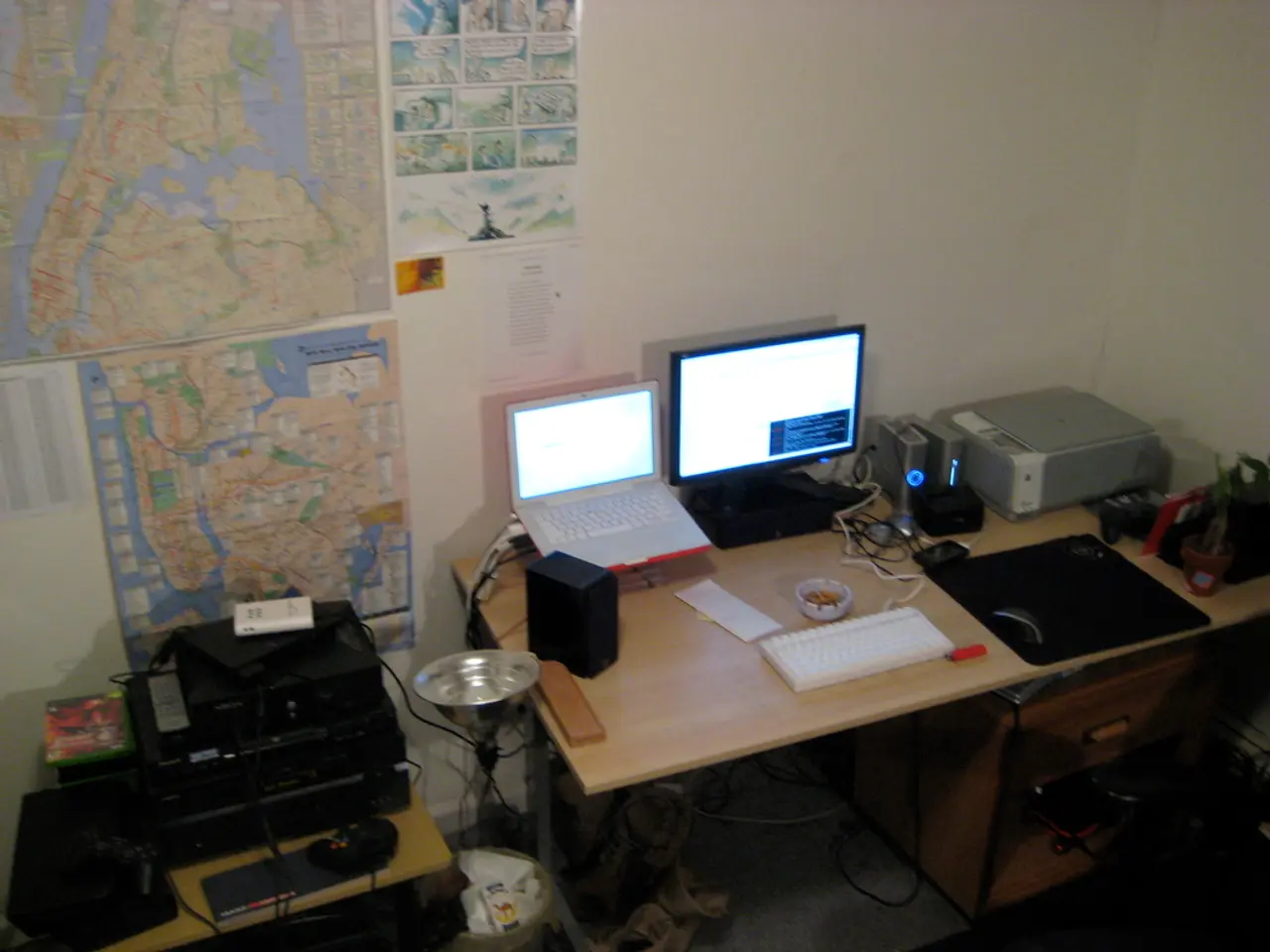What Audio Interface is Appropriate for My Home Recording Setup?
Get set for a sonic adventure: You're fired up, ready to belt out tunes or strum away at your guitar. But without the right audio interface, your masterpiece might be lost in translation.
Your audio interface is more than just a tool—it's your sonic translator. It takes your raw energy, converts it into digital magic, and preserves every note and breath.
Find your gateway to digital audioland with this guide. Whether you're in your home studio or a professional setup, your audio interface is essential. Here's the inside scoop:
A solid audio interface means crystal-clear recordings. Don't compromise on inputs, outputs, and preamp quality. Each element shapes your sonic journey.
Level up with an audio interface, and capture every whisper and roar with unmatched clarity. Let's dive in!
In a Nutshell
- Audio interfaces are essential for high-quality digital recording.
- Key considerations include preamps, I/O (inputs/outputs), and digital connections.
- Choosing the right interface boosts your studio's functionality.
Setting the Tone: Basics of Audio Interfaces
Navigating the digital audio world? Your audio interface is the bridge. It connects the analog sounds of your instruments or voice to the digital realm of your computer.
Here's what you should know:
- Inputs: These are where you connect mics, instruments, or other sound sources.
- Outputs: They transmit the processed audio back out to speakers, headphones, or other devices.
Signaling the Sound: Your audio interface acts as a translator, converting analog signals (such as your voice) into digital signals your computer can process.
- Converters: The magic happens here. They convert the incoming analog signals into digital format and vice versa. Opt for capable converters for premium quality.
Plug and Play: Most audio interfaces connect via USB, though there may be Thunderbolt or FireWire options depending on your needs and setup.
Above Average Features: Consider high-quality converters, versatile connection types, and onboard processing to stand out from the generic pack.
Connecting Your Instruments
44.1
Mastering the connections in your studio is paramount for capturing high-quality audio.
Mic and Mic Preamps
To record vocals or acoustic instruments, you'll need a mic and a mic preamp.
CD Quality, widely accepted standard
- Mics: Connect them to your audio interface via XLR inputs. Look for models with high-quality and balanced audio that minimize noise.
- Mic Preamps: They boost the mic's signal to a level your DAW can handle. Some interfaces have built-in preamps with gain control, while others may require an external one.
Electric Guitars and Line Inputs
Connect your electric guitar or bass to your audio interface with:
- Guitar Inputs: Use 1/4-inch instrument inputs for a high-impedance signal from the guitar.
- Line Inputs: These are ideal for keyboards or electronic instruments and are also a good choice for outboard gear like mixers or guitar preamps.
Pro tip:
Ensure your audio interface has sufficient XLR inputs and preamps if you plan to record multiple microphones simultaneously.
48
Digital Audio Under the Hood
Digital audio encompasses two main aspects: sample rate and bit depth. Enhance your sound's clarity and quality by understanding these factors.
Sample Rate and Bit Depth
Common for film and video production
Sample rate defines the number of snapshots your digital audio system takes per second (44.1kHz to 192kHz). A higher sample rate ensures greater detail in your recording.
Bit depth estimates your recording's dynamic range, or the variation between quiet and loud sounds. It's like having more shades of color in your palette.
A higher bit depth provides more levels for defining volume, leading to finer detail in loud and quiet passages.
Why Sampling Matters:
- Sample rate and bit depth work together to recreate the nuances of real-world sounds.
- Higher sample rates and bit depths lead to improved clarity and quality.
Your Audio Interface Pick
96
Choose wisely when searching for the ideal high-quality interface. Consider compatibility, quality, and budget.
Compatibility and Connection Types
Ensure your audio interface is compatible with your computer and connection type.
Professional audio recording
- USB Interfaces: These are popular for both home studios and professionals.
- Thunderbolt: Offers high-speed data transfer for more demanding professional tasks.
- FireWire: Not as common but favored for its reliable data throughput.
Quality and Price
High-end interfaces sport better components but come with a hefty price tag. Explore budget-friendly options that won't compromise on sound quality.
Sizing Up Your Options
Select an interface that grows with you—consider your current needs and potential future requirements.
Pro tip: Engage a sales engineer for expert guidance on selecting the perfect interface for your setup and budget.
192
Studio Essentials
Studio setups require careful planning when it comes to monitoring and controlling your DAW.
Monitoring and Headphones
High-resolution audio and mastering
Invest in high-quality studio monitors for accurate audio reproduction. Opt for models with:
- Wide frequency ranges
- Compact sizes and powerful drivers for small studios
- Built-in DSP for room correction and tailored sound
Choose the right headphones for intimate monitoring and quiet environments. Pick models with:
- Flat frequency responses for accurate sound
- Comfort to last through long sessions
- Closed-back designs for minimal sound bleed
MIDI and Control Surfaces
Control surfaces offer a tactile and efficient workflow experience. These devices often include:
- Knobs, faders, and buttons for mapping your DAW functions
- MIDI inputs and outputs for seamless communication between your gear and DAW
- Routing options for managing signal flow
Ensure your audio interface includes a sound card with low latency for synced recordings and playback.
Outro
Got your studio gear settled? Your journey into the realm of digital audio awaits. With a solid audio interface as your foundation, capture every whispered dream and powerful roar with unmatched clarity. So dig in and start crafting your masterpiece!
Wrap-up Tips
- Choose an interface with high-quality converters for enhanced recording fidelity.
- Seek out interfaces with multiple input channels when recording multiple instruments or microphones.
- Buy an interface that can grow with you—consider your future recording needs when selecting your gear.
- Your audio interface, crucial in digital recording, acts as a bridge between analog instruments or voices and the digital realm of your computer.
- The audio interface's inputs connect mics, instruments, or other sound sources, while outputs transmit processed audio back out to speakers, headphones, or other devices.
- A solid audio interface guarantees crystal-clear recordings, with key considerations being the quality of preamps, inputs, outputs, and digital connections.
- When leveling up with an audio interface, choosing the right one boosts your studio's functionality by ensuring unmatched clarity in capturing every whisper and roar.
- Digital audio consists of two main aspects: sample rate and bit depth, enhancing sound clarity and quality as higher values ensure greater detail in recordings.
- In studio setups, high-quality studio monitors are essential for accurate audio reproduction, featuring wide frequency ranges, compact sizes, powerful drivers, and built-in DSP for room correction.
- Control surfaces offer a tactile and efficient workflow experience, incorporating knobs, faders, buttons for mapping DAW functions, MIDI inputs and outputs for seamless communication, and routing options for managing signal flow.




